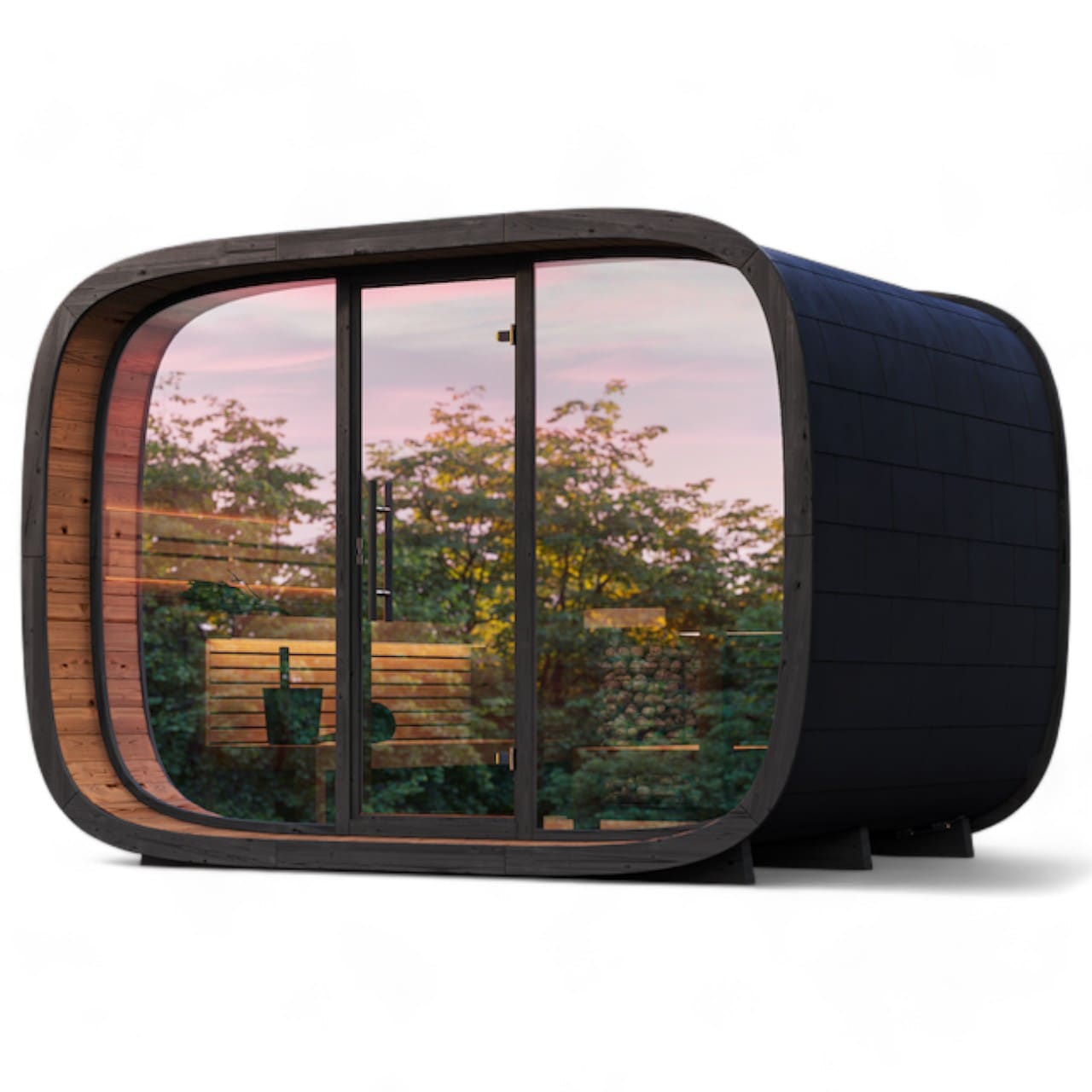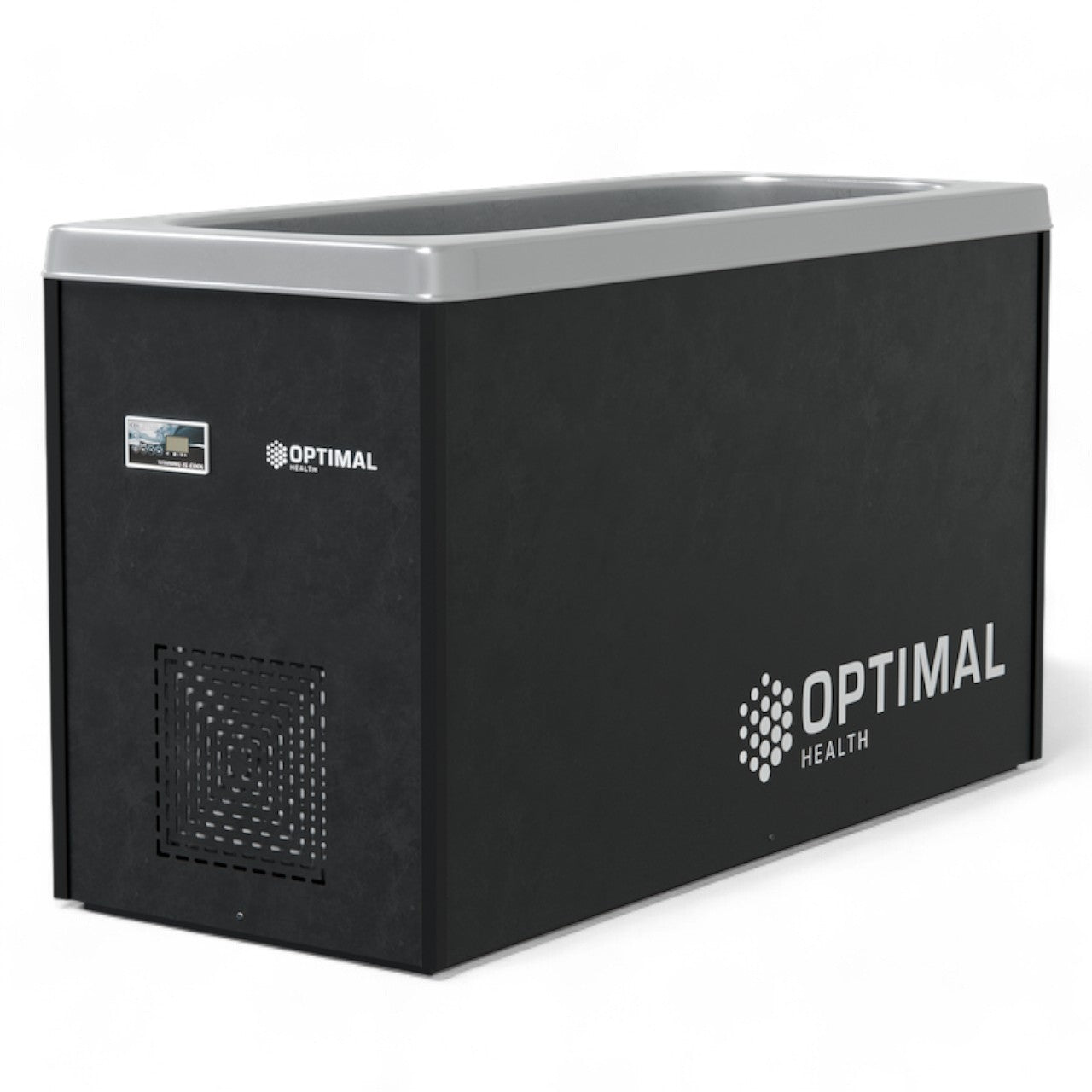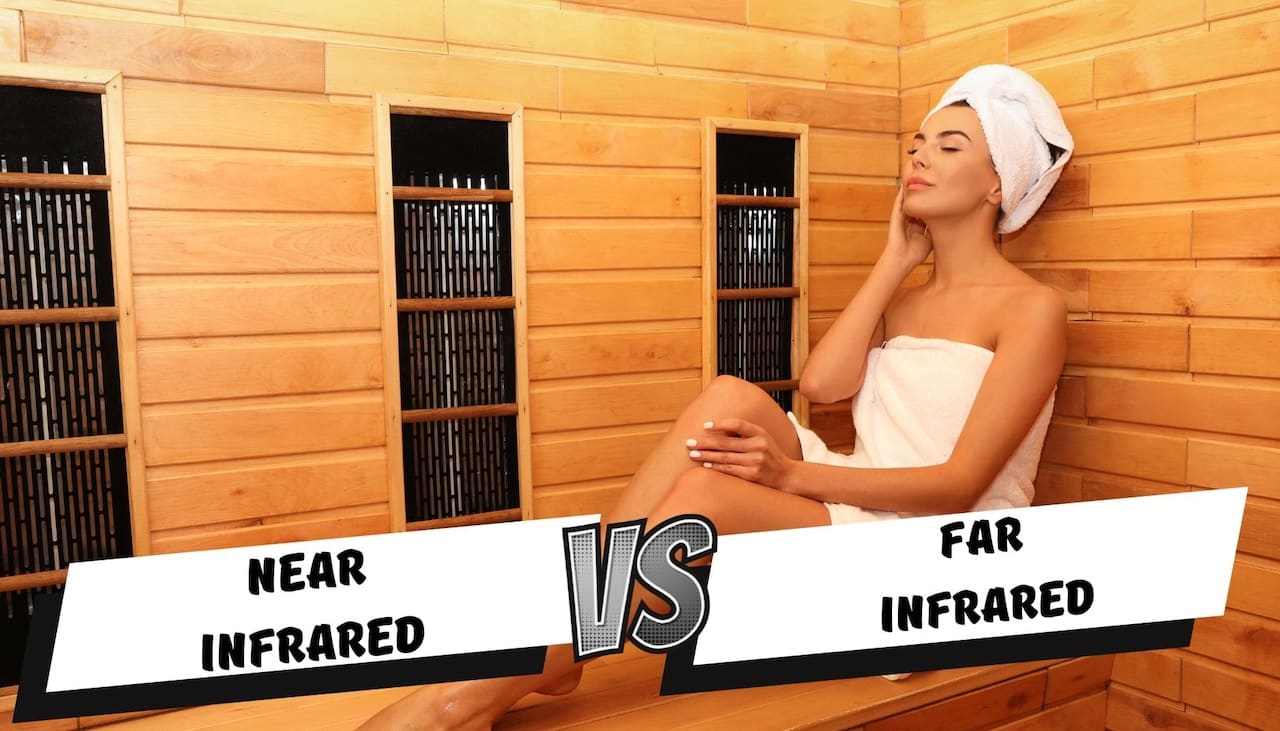Understanding the differences between near infrared and far infrared heat can unlock greater health benefits for you. When it comes to infrared saunas, these two types of infrared heat work in distinct ways. You may have heard about the value of infrared saunas for detoxification, relaxation, and relief from muscle pain.
Near infrared penetrates the skin's outer layer and is often used for skin revitalisation and wound healing. Far infrared, on the other hand, penetrates deeper into your body, reaching muscles and even bones, making it ideal for thorough relaxation and muscle recovery. Knowing how near and far infrared work together could optimise your sauna experience.
Key Takeaways
- Near infrared is great for skin treatment and wound healing.
- Far infrared helps with muscle relaxation and recovery.
- Combining both can enhance your overall health benefits.
Fundamentals of Infrared Heat
Infrared heat is an essential part of the electromagnetic spectrum, with various applications in heating. Understanding the differences between near infrared and far infrared can help you grasp its practical uses.
The Electromagnetic Spectrum and Infrared Light
Infrared light lies beyond visible light on the electromagnetic spectrum, with wavelengths ranging from 0.7 to 1000 micrometres (µm). Unlike visible light, it cannot be seen by the human eye. Infrared light is divided into three categories: near infrared (NIR), mid infrared (MIR), and far infrared (FIR).
- Near Infrared: 0.7 to 1.4 µm
- Mid Infrared: 1.4 to 3 µm
- Far Infrared: 3 to 1000 µm
Each type of infrared radiation interacts with materials differently. For example, NIR tends to be absorbed by the skin's surface, while FIR penetrates deeper. This difference affects how these wavelengths are used in various applications.
Heat Transfer Mechanisms
Infrared heat transfer involves three mechanisms: conduction, convection, and radiation.
- Conduction: Heat moves through direct contact.
- Convection: Heat is transferred through a fluid (air or water).
- Radiation: Heat is emitted in the form of electromagnetic waves.
Infrared heat primarily uses radiation to transfer energy. Infrared heaters emit electromagnetic waves that travel through the air and heat objects directly. This method is efficient because the heat source doesn’t need to warm the surrounding air first.
Infrared radiation is useful for industrial processes and heating applications in household items. For instance, some space heaters and saunas employ far infrared to provide deep warmth.
Near Infrared vs Far Infrared: Key Differences
Near Infrared (NIR) and Far Infrared (FIR) differ significantly in their properties and uses. Here's a table to illustrate the key differences:
| Feature | Near Infrared (NIR) | Far Infrared (FIR) |
|---|---|---|
| Wavelength | 0.7 to 1.4 µm | 3 to 1000 µm |
| Penetration | Shallow | Deep into tissues |
| Temperature | 700°C to 1300°C (1292°F to 2372°F) | 30°C to 100°C (86°F to 212°F) |
| Uses | Medical treatments, imaging | Saunas, heat therapy, drying |
NIR is used in medical imaging and treatments due to its limited penetration depth and high temperature. In contrast, FIR is used in applications requiring gentle, deep heating, such as saunas and therapeutic devices.
These distinctions make each type of infrared heat suitable for different purposes. Understanding these can help you choose the right infrared heat type for your needs.
What is the Difference Between Near and Far Infrared?
Near infrared (NIR) and far infrared (FIR) saunas both use infrared heaters but vary in their heat emissions and benefits. Each type offers a unique sauna experience.
Differentiating Near and Far Infrared Saunas
Near infrared saunas emit light wavelengths closer to the visible spectrum. These wavelengths tend to penetrate the skin more superficially. The heat from a near infrared sauna is less intense, yet it helps improve skin health and stimulates cell regeneration.
Far infrared saunas emit longer wavelengths. These penetrate deeper into the body, reaching muscles and tissues. The heat is more intense and effective for detoxification and relieving muscle pain. A far infrared sauna can make you sweat more compared to NIR.
Infrared Heating Elements and Sauna Heaters
Near infrared heaters usually use incandescent bulbs or LED panels. These heaters focus on a specific area, offering targeted heating. In contrast, far infrared heaters often use carbon or ceramic elements. These elements provide uniform heat across the sauna, creating an enveloping warmth.
Infrared heat sources in FIR saunas are excellent for larger spaces, as they distribute heat evenly. NIR saunas, though, are more suited for focused therapy. This can be useful if you have specific areas needing heat treatment.
Overall Sauna Experience and Use
The experience in a near infrared sauna is often described as milder. Temperatures range from 40-65°C (104-149°F). This makes NIR saunas suitable for those who prefer lower heat or have sensitive skin.
A far infrared sauna typically operates at higher temperatures, around 55-75°C (131-167°F). This leads to more intensive sweating and offers benefits in detoxification and weight loss.
The choice between NIR and FIR saunas depends on your health goals. If you prefer a relaxing session with milder heat, go for a near infrared sauna. For deeper body detox and muscle relaxation, a far infrared sauna is the better option.
What are the Health Benefits of Infrared Saunas?
Infrared saunas offer a variety of health benefits, from pain relief to improving skin health. They operate at lower temperatures than traditional saunas, making them accessible and comfortable for more people.
Comparing Therapeutic Benefits
Far-infrared saunas penetrate deeper into the skin compared to traditional saunas. This deeper heat leads to a more vigorous sweat at lower temperatures, around 50°C-60°C (122°F-140°F). Traditional saunas, in contrast, operate at around 70°C-90°C (158°F-194°F). This makes far-infrared saunas more comfortable for those sensitive to high heat.
Near-infrared light focuses more on surface-level therapeutic benefits. It can help with conditions like wound healing and reducing scars. Both far-infrared and near-infrared have unique advantages, making a combined approach potentially more effective.
How Does Infrared Heat Affect Core Body Temperature?
Infrared saunas increase your core body temperature from within. Traditional saunas heat the air, whereas infrared saunas use light to heat the body directly. This leads to a more effective rise in core temperature without having to endure extreme heat.
Raising your core temperature stimulates various health benefits like detoxification and improved circulation. This can help in flushing out toxins and enhancing your overall cardiovascular health. Many users find this gentler, internal heating more relaxing and less strenuous.
Pain Relief and Skin Health
Infrared saunas are known for their pain relief benefits. The heat can penetrate deeply into your muscles, reducing inflammation and easing joint pain. This makes them particularly useful for people with arthritis or chronic pain issues.
In terms of skin health, the increase in blood circulation from infrared heat can help improve your skin tone and texture. It can also reduce acne and improve skin elasticity. Some users even report a youthful glow after regular sessions.
Understanding the Full Spectrum of Benefits
The full-spectrum infrared includes near, mid, and far-infrared wavelengths. Each has unique therapeutic properties. Near-infrared can help with cell regeneration and wound healing. Mid-infrared can enhance blood flow and reduce inflammation, while far-infrared offers deep tissue heating.
Using all three wavelengths can give you a comprehensive sauna experience. This method focuses on delivering a range of health benefits like relaxation, pain relief, and improved skin health. Opting for a full-spectrum infrared sauna can thus provide a more balanced and effective approach to wellness.
Can Far Infrared and Near Infrared be Used Together?
Using far infrared (FIR) and near infrared (NIR) together can provide enhanced benefits, especially in therapeutic applications.
Both types of infrared rays offer unique properties that can complement each other when used simultaneously.
What are the Advantages of Combining Both Types?
Combining FIR and NIR offers a broader range of benefits.
FIR penetrates deeper into the body, reaching muscles, joints, and even bones. This deeper penetration helps in enhancing blood circulation and relieving pain.
Meanwhile, NIR penetrates the skin effectively and can be used for surface-level treatments such as wound healing and skin rejuvenation.
Combining both types can provide a holistic approach to therapy.
For example, using NIR for improving skin condition while simultaneously using FIR for deeper muscle recovery can lead to more comprehensive treatment.
Enhanced blood flow is another advantage.
While NIR boosts circulation closer to the skin, FIR can help improve blood flow deeper within the body, supporting overall health and recovery.
How do They Complement Each Other in Therapy?
FIR and NIR can be used together in physical therapy and wellness treatments.
FIR's ability to penetrate deeply means it can effectively relieve muscle stiffness and joint pain. This makes it ideal for treating chronic conditions like arthritis.
On the other hand, NIR is excellent for improving skin health and accelerating wound healing.
By boosting collagen production and reducing inflammation, NIR can help your skin look healthier and younger.
Together, they can offer a more comprehensive therapeutic experience.
For example, in a spa setting, a session could use NIR to improve skin health and FIR to relieve muscle tension, providing a dual benefit in one session.
Conclusion
When comparing near infrared (NIR) and far infrared (FIR) heat, it's important to understand the key differences.
NIR heat penetrates deeper into the skin, promoting muscle relaxation. This makes it ideal for athletes and those looking to improve muscle recovery.
Studies have shown that NIR heat can significantly enhance recovery during intensive training.
FIR heat, on the other hand, operates at a different wavelength and mainly affects the surface of the skin. It is effective for reducing inflammation and improving blood flow. FIR is often used in therapies targeting cardiovascular health, as shown by research.
| Feature | Near Infrared | Far Infrared |
|---|---|---|
| Wavelength | Shorter | Longer |
| Penetration | Deep | Surface |
| Best For | Muscle recovery, deeper tissue | Skin conditions, blood flow |
Many people favour FIR saunas for their cardiovascular benefits. Research indicates that these saunas can improve vascular health by enhancing endothelial function.
Both types of infrared heat have their own benefits. Your specific needs—whether they are muscle recovery or improving skin and cardiovascular health— will guide your choice.
It is our opinion that most of the benefits in an infrared sauna come from Far Infrared heat, this is what makes you sweat. But have a mixture of all 3 covers all bases.















Leave a comment